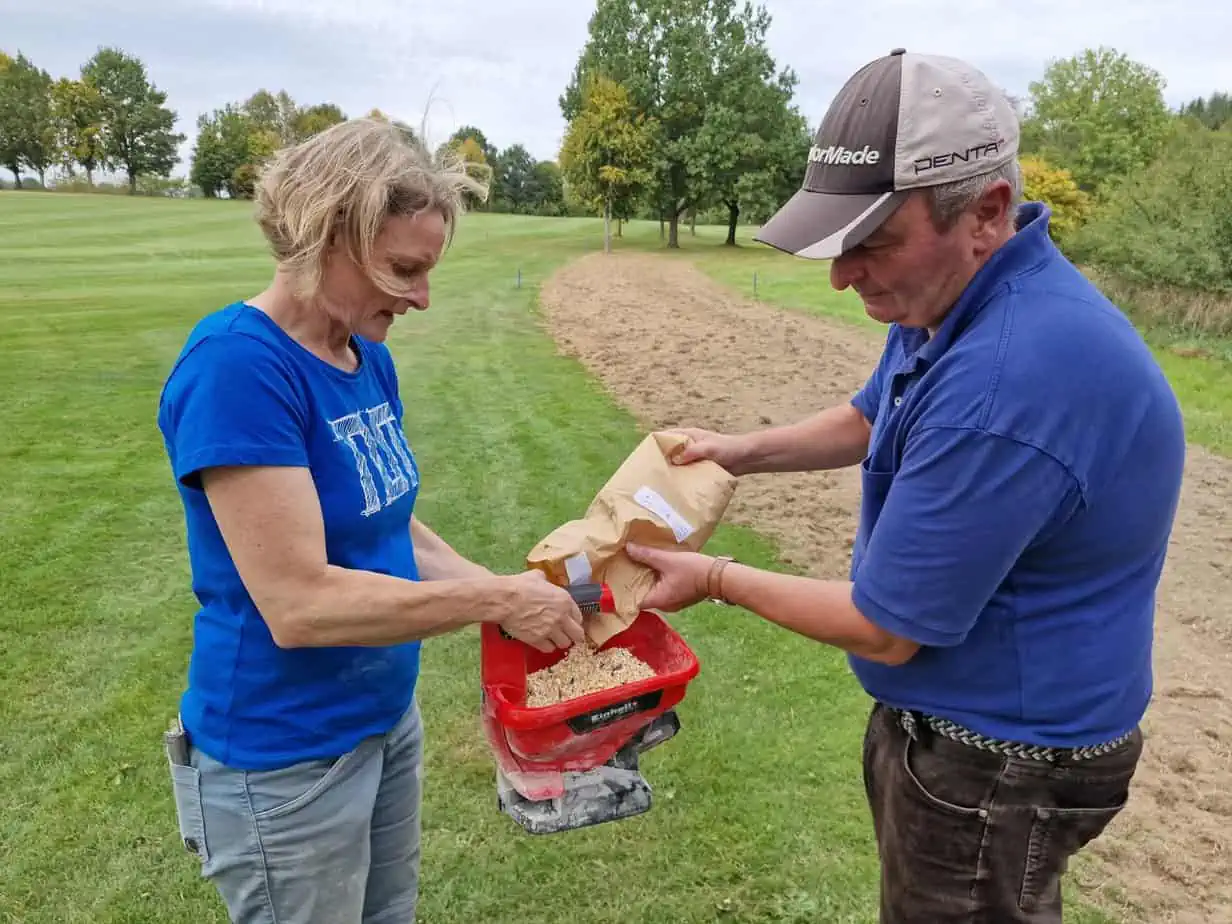2nd phase of GolfBiodivers in Erding and Regensburg
In the nationwide research project GolfBiodivers, which is supervised by the Technical University of Munich in the Bavarian region, the two golf courses GC Erding-Grünbach and G&LC Regensburg have completed another important step in their work. In the meantime, in coordination with the scientists from the Chair of Renaturation Ecology, the areas intended for the enhancement measures on the golf courses were sown.
GolfBiodivers included a six-year study funded by the Federal Agency for Nature Conservation and conducted by DGV. The potential for more biodiversity is determined on a total of 64 German golf courses. Four Bavarian golf courses are also involved in the first phase.
Both at the GC Erding-Grünbach, where Michael Kollmair as Golf & Nature representative of the club accompanied the work, and at the G&LC Regensburg, the scientists around the project coordinator Sandra Rojas Botero had selected the different areas and ordered the appropriate seed. As with all other golf courses in Germany participating in the research project, flowering areas, meadow herb areas and high fringing areas will be established and their development monitored. On average, the upgrading measure takes place on three hectares of land.
This was prepared in advance by the clubs’ greenkeeping teams for seeding by mowing once deep and then deep tilling to remove any previous grass or weeds and give the new seed ideal growth opportunities. Due to the very dry autumn, seeding fell relatively late in October. However, due to the already relatively warm temperatures, Rojas-Botero said, this was not a problem.
For the TU Munich team, cooperation and coordination with the golf courses is extremely important. After all, each greenkeeping team uses different machinery, has to cope with different soil conditions and the climatic conditions differ to some extent. While rainfall in Regensburg is rather low, soil conditions in Erding-Grünbach were relatively normal this summer.
The decisive factor in determining the areas, however, was that they did not restrict the flow of play at the golf club. Therefore, the areas that were first selected by the scientists were also changed again in a second step after consultation with the clubs.
In the meantime, the seed has been distributed everywhere and rolled in. For scientists, this means: Waiting until spring. Then, an initial inventory will reveal whether the seeds have developed well and are producing the vegetation that ecologists want. Ideally, areas are created that provide a permanent supply of flowers from spring to late fall. This increases the food supply for insects and small amphibians. Away from the fairways and greens, the habitat is to become even more diverse.









 All images: The Wisley Golf Club
All images: The Wisley Golf Club